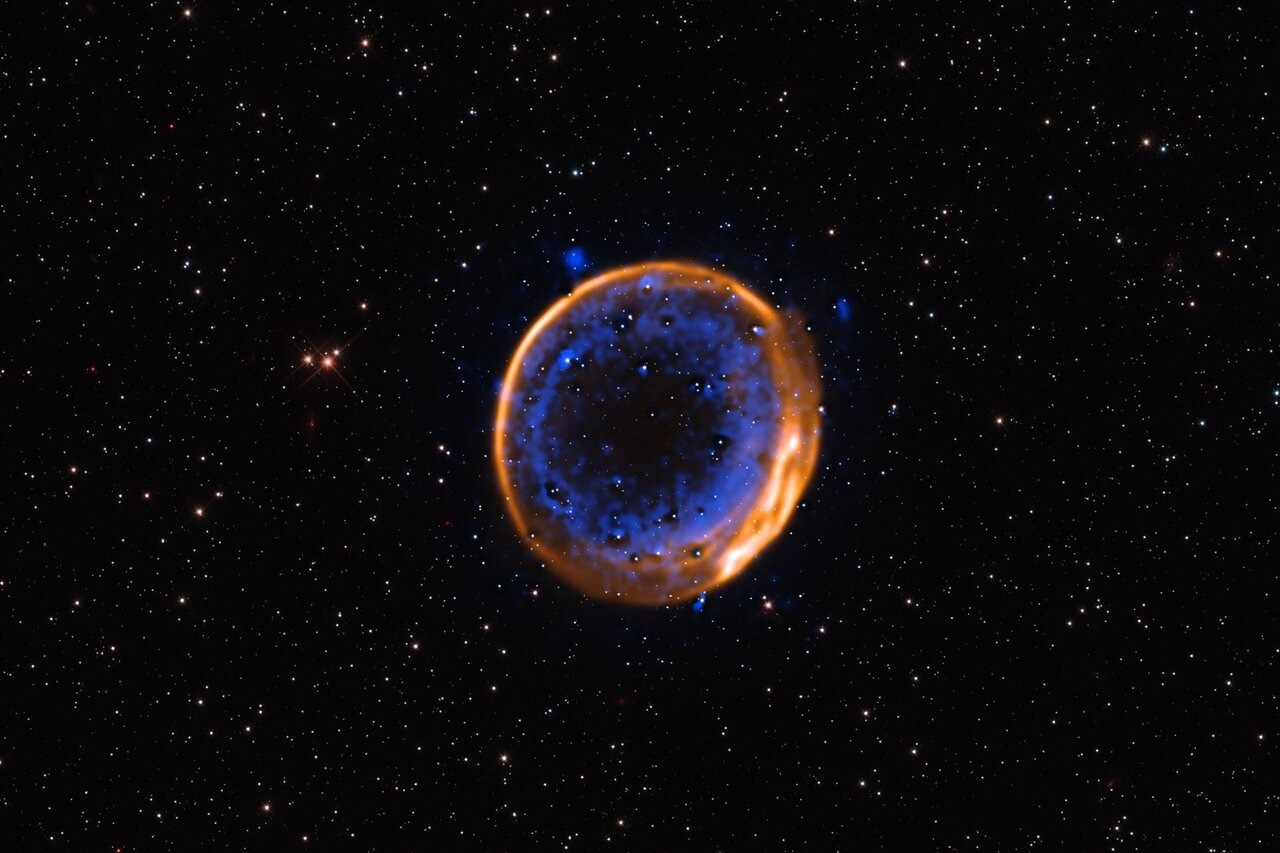Astronomers have found visible evidence for the first time that a star detonated twice to terminate its life. Researchers have discovered patterns in the centuries-old remains of supernova SNR 0509-67.5 using the European Southern Observatory's Very Large Telescope (ESO’s VLT), confirming that its star experienced a pair of cataclysmic blasts. The revelation, published in Nature Astronomy, sheds fresh insight on some of the Universe's most significant explosions.
 VLT image of a double-detonation supernova. Image Credit: European Southern Observatory
VLT image of a double-detonation supernova. Image Credit: European Southern Observatory
Most supernovae result from the dramatic collapse of massive stars, but one important type comes from a more modest origin. Known as Type Ia supernovae, these explosions are triggered by white dwarfs: compact, inactive stellar cores left behind after stars like our Sun exhaust their nuclear fuel.
The explosions of white dwarfs play a crucial role in astronomy.
Priyam Das, Study Lead and PhD Student, University of New South Wales
In addition to being the main source of iron on Earth, including iron in blood, Type Ia supernovae represent the foundation for most of what is now understood about how the Universe grows.
Das added, “Yet, despite their importance, the long-standing puzzle of the exact mechanism triggering their explosion remains unsolved.”
All models for Type Ia supernovae start with a white dwarf in a pair of stars. If the dwarf orbits near enough to the other star in the pair, it can take material from it. According to the most widely accepted hypothesis of Type Ia supernovae, the white dwarf gathers materials from its partner until it reaches a critical mass, at which time it explodes.
However, new research suggests that at least some Type Ia supernovae can be best described by a twin explosion that occurred before the star reached this critical mass.
Astronomers have now caught a new image that indicates their hypothesis was correct: at least some Type Ia supernovae burst by a 'double-detonation' process instead. In this alternate concept, the white dwarf creates a blanket of stolen helium around itself, which can grow unstable and ignite. This first explosion causes a shockwave to flow around the white dwarf and inwards, resulting in a second detonation in the star's core, which eventually causes the supernova.
Until now, there had been no unambiguous visible proof of a white dwarf’s twin explosion. Astronomers have recently predicted that this process should result in a specific pattern or fingerprint in the supernova’s still-glowing remnants, visible long after the initial explosion. According to research, the remnants of such a supernova would consist of two different calcium shells.
Astronomers have discovered this fingerprint in supernova remnants.
A clear indication that white dwarfs can explode well before they reach the famous Chandrasekhar mass limit, and that the ‘double-detonation’ mechanism does indeed occur in nature.
Ivo Seitenzahl, Study Lead, Heidelberg Institute for Theoretical Studies
Using the Multi Unit Spectroscopic Explorer (MUSE) on ESO's VLT, the team detected these calcium layers (blue in the picture) in the supernova remnant SNR 0509-67.5. This gives compelling evidence that a Type Ia supernova can occur before the parent white dwarf reaches critical mass.
Type Ia supernovae are crucial to the understanding of the universe. They act consistently, and their predicted brightness, regardless of distance, allows astronomers to calculate distances in space.
Using them as a cosmic measuring tape, astronomers found the Universe’s rapid expansion. Studying how they erupt helps us understand why they have such a consistent brilliance.
Das has another reason to investigate these explosions.
“This tangible evidence of a double-detonation not only contributes towards solving a long-standing mystery, but also offers a visual spectacle. Revealing the inner workings of such a spectacular cosmic explosion is incredibly rewarding,” Das further added.
Journal Reference:
Das, P., et al. (2025) Calcium in a supernova remnant as a fingerprint of a sub-Chandrasekhar-mass explosion. Nature Astronomy. doi.org/10.1038/s41550-025-02589-5.